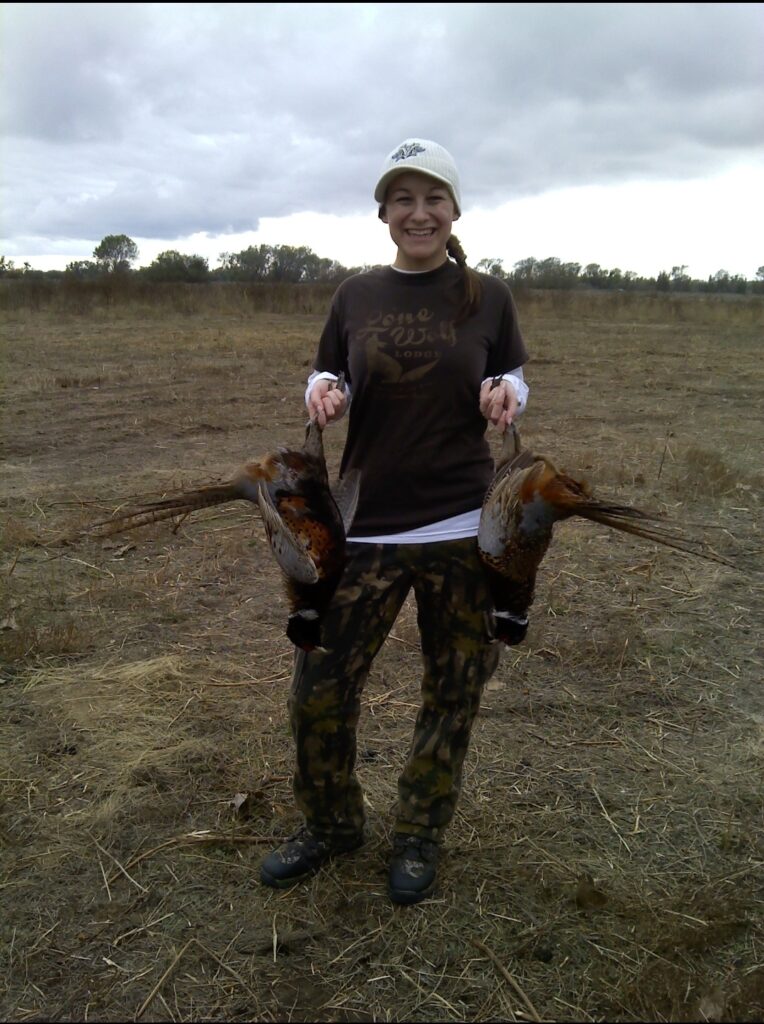MDF Employee Spotlight


In the MDF Employee Spotlight Segment the Mule Deer Foundation would like to call attention to a specific MDF employee, and bring their efforts to the forefront of our messaging. These staff members are pivotal to the Mule Deer Foundation accomplishing our mission and it’s important that we recognize them as often as we can.
“The Wo-Man in the Arena”
Many of you have read this speech from 1910 by one of the great conservationists of the world. For those of you who have not read it below is an excerpt.
“It is not the critic who counts; not the man who points out how the strong man stumbles, or where the doer of deeds could have done them better. The credit belongs to the man who is actually in the arena, whose face is marred by dust and sweat and blood; who strives valiantly; who errs, who comes short again and again, because there is no effort without error and shortcoming; but who does actually strive to do the deeds; who knows great enthusiasms, the great devotions; who spends himself in a worthy cause; who at the best knows in the end the triumph of high achievement, and who at the worst, if he fails, at least fails while daring greatly, so that his place shall never be with those cold and timid souls who neither know victory nor defeat.”
This highly quotable speech by Theodore Roosevelt embodies so many folks at the Mule Deer Foundation. The individual in this Staff Spotlight is MDF Director of State Partnerships and Conservation Administration Sarah Deaton.
Sarah is not boastful about the work she does nor is she timid. Sarah strides across the Sierra Nevada’s like a caricature of Paul Bunyan. She does the work because it is hard, it is fun, is exciting. She does the work because of the great reward she gets from it every day. But mostly she does the work because it must be done. In the deep, dark, timber Sarah dares the conservation world to criticize her work; to match her, to beat her. She stands on a mountain, wire cutters in hand, sweat dripping from the brim of her hard hat, daring the rest of us to be better.

Who is Sarah:
Sarah grew up in a hunting family in Northern California. She helped her father raise a pack of German wire-haired pointers focused on upland birds and waterfowl. As a first-generation college student Sarah was unsure on where she wanted to go to school or what she wanted to study and how that would translate to real life. If you asked her at the time she would have told you she wanted to be a wildlife photographer, although she didn’t realize that could be a real job.
Sarah started her educational journey at Sacramento State University but was soon called away into the outdoors taking a hiatus from school. One of her early professors was a California Fish and Game biologist and had an opening on her team she encouraged Sarah to apply for.
To be clear the professor said, “Sarah, If you don’t apply for this role I will fail you”
Sarah took the job, focused on introducing new hunters to upland game in California. She was soon promoted and has since worked on mountain lions, bears and feral hogs. This work in California prompted Sarah to further engage in the conservation conversation bringing her to an ecology administration position at Montana State University in Bozeman. While working for the university Sarah realized that there was a tuition assistance program for employees and finished her undergraduate degree in Biological Science and Fish and Wildlife management in 2021.

Why Mule Deer:
While Sarah has spent her adult life outdoors and much of her childhood between California and her grandparent’s ranch in Oregon always looking at or working with various species of Wildlife, she is a self-described,
“Victim of charismatic megafauna”
“My grandfather was a huge impact on my life. He and my grandmother had a medium sized ranch in the canyon lands of Oregon and he spent 25 years working for the United States Forest Service, doing everything from habitat work to wild-land firefighting. I was young; close to seven or eight years old and every night of the summer we would go out to this canyon on the ranch and he and I would sit there as the sun set glassing for animals. I could tell he was always so excited for the Big Horn sheep and the Mountain Goats but for some reason the huge antlers of the Mule Deer bucks in velvet just took my breath away.”
In talking with Sarah, her passion and excitement for wildlife is evident from the first sentence. It’s abundantly clear that so much of who Sarah is today stems from a deep connection to the landscape and to Mule Deer specifically.
“I don’t know if it’s the antlers or more likely what these incredible animals represent, the West, wildness, my childhood, redemption… There’s just something about these animals… they will always be a part of who I am”

What does Sarah do for MDF
Sarah’s first job after finishing her degree at Montana State was with the Mule Deer Foundation. We hired her to be a conservation administration associate. A position categorizing, organizing and providing logistical support for our staff in the field. After some time, Sarah moved from a conservation associate role to a supervisor role and eventually to her current role as a director.
Sarah is our resident problem solver at the Mule Deer Foundation. She is pivotal to all we do due to her problem-solving process. Sarah approaches every problem at the Mule Deer Foundation in the same way as she would a ecosystem study problem. This is what makes her so effective in her position.
“I love the quote you cannot see the forest for the trees, but for me it seems the opposite. The closer I looked at the tree the more I could understand and appreciate the forest…. I love understanding systems and figuring out the puzzle on how and why everything in the ecosystem fits together. The bears, the deer, the grass, the hunter all have a part to play. The more complex the better”
– Sarah on problem solving
While some people are quick to find a solution, however well-intentioned those solutions may be they ultimately lead to more problems. A prime example of this in the conservation world is introducing the mongoose to the islands of Hawaii after accidentally introducing rats. The thought being that the mongoose would eat the rats, and we could undo our own mistake.
However well-intentioned the result of this is now a population of mongoose on the Hawaiian Islands that is decimating the native bird population. Similarly, in the 1970s every green organization and conservation group urged folks to use plastic bags at the grocery store because paper bags were
“leading to deforestation and killing all the trees.”
We see now 50 years later the flaw in that thought process.
The way Sarah’s brain works makes her all but immune to the traps and pitfalls of standard human problem solving. Sarah’s ability to focus not only on one aspect of the problem but on the larger ecosystem impacts to Mule Deer and the conservation world are key to the Mule Deer Foundation’s ability to complete our mission.
Sarahs message to the Conservation World
“I know everyone wants to be in the field including myself. But my role at the Mule Deer foundation allows me to not self-segment my efforts into our work with the US forest service or our work with state governments, or our work with the Bureau of Land Management but on whatever piece of the project is best for Mule Deer and Blacktail Deer. I have a distinct skill set that is incredibly beneficial for the administrative side of our business. This is a separate skill set than many of our field biologists have. While neither is better than the other both skill sets are required to complete our mission”
While it is evident that Sarah could be incredibly impactful if we put her back in the field full time, the organization would suffer immensely by losing her in a central leadership capacity. Few others on staff have the capability or the natural organizational tempo to manage our diverse suite of projects the way Sarah can.
I asked Sarah what her one piece of advice to the conservation world would be and her answer didn’t disappoint.
“I run into people every single day both professionally and in my personal life who want to help with conservation. People who say I wish I would have gone to school for what you do, or your job sounds incredible I wish I could do that. My advice to them is always the same, no matter what your skill set or work history is there is always room for you in the conservation conversation. Just because you’re not in the field collaring Mule Deer or doing a study on the effectiveness of wildlife friendly fencing doesn’t mean you aren’t helping. We have so many projects across such a wide range of habitat across the United States that we need all the help we can get. Reach out to us, join your local chapter, I promise we can use your help somewhere.”
Thank you Sarah for all you do!
Good luck this fall. Send pictures or stories from the field to [email protected] to be featured on our website or in our magazine. If this article, or any of our articles helped you become a better conservation steward, join the mule deer foundation. Click here to join: https://muledeer.org/product-category/membership/
Trevor Hubbs

Trevor is the Communications Manager and Editor for the Mule Deer Foundation and Blacktail Deer Foundation. He grew up hunting and fishing the Ozark Mountains for quail, ducks, and bucks. Now he ventures west for mule deer as often as possible.





